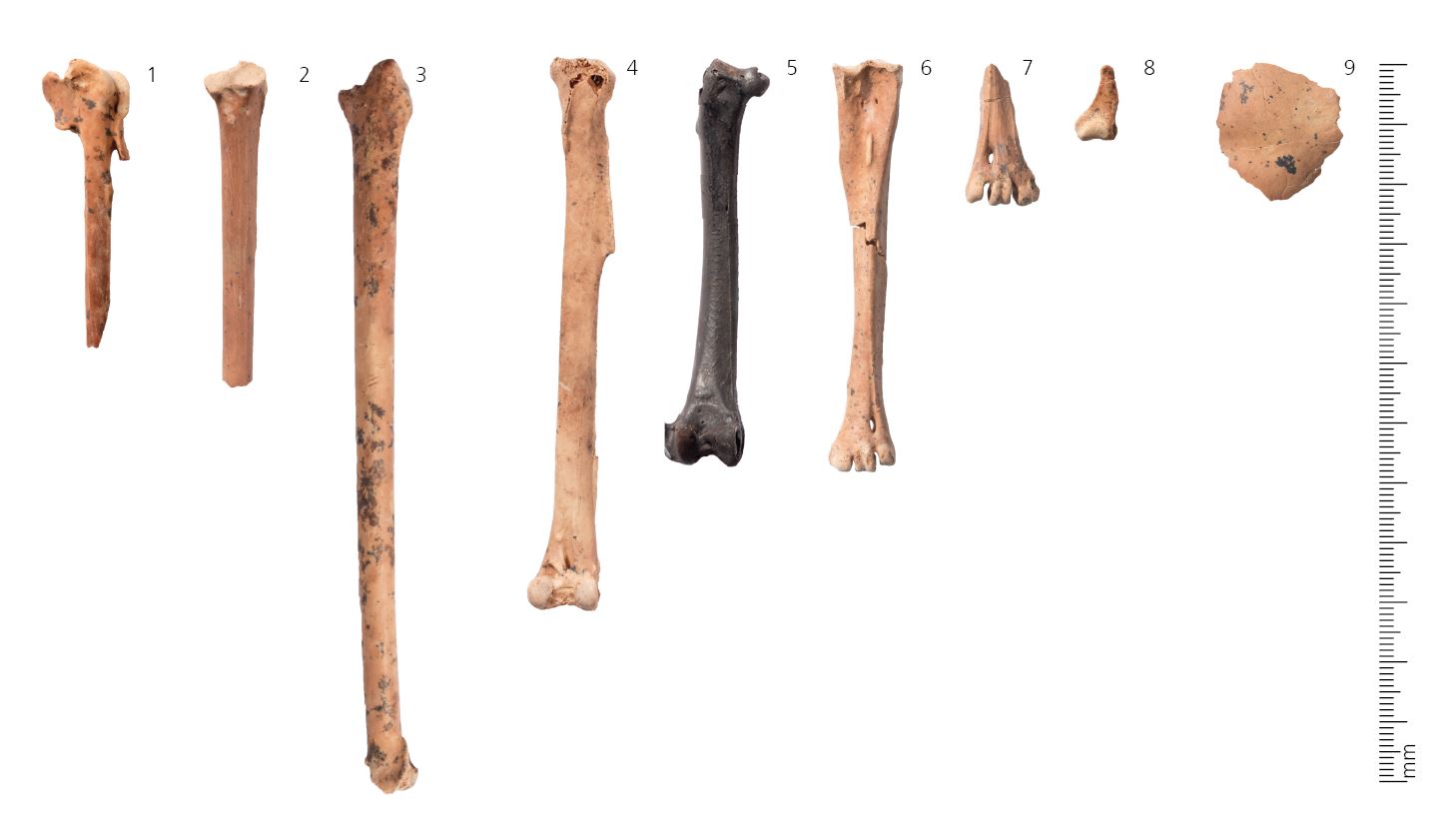Steppe Buzzard
Buteo buteo vulpinus
Common passage migrant
Found at Neolithic WF16
The Steppe Buzzard’s habitat is quite variable, but it usually needs some trees to nest and roost within. It appears in Wadi Faynan as a very common passage migrant, travelling south from August to November and back north from February to May, often occurring in large flocks.
Buzzards form the bulk of the bird remains from the Neolithic site of WF16, dating to between 12,000 and 10,000 years ago and were most likely killed for their feathers. Buzzards have also been found at other Neolithic archaeological sites across Jordan, such as Wadi Abu Tulayha in the al-Jafr Basin and ‘Ain Ghazal in Amman.
Bones of the Steppe Buzzard found at WF16
- Wing bone with cut marks suggesting feather removal
- Striations from a stone blade on a wing bone
- Wing bone with cut marks from a stone blade
- Leg bone
- Leg bone that has been burnt in a Neolithic fireplace
- Leg bone with cut marks from a stone blade
- Leg bone with cut marks suggesting skinning
- Toe bone with cut marks suggesting the removal of talons
- A skull cap with cut marks suggesting skinning

Image credit: ‘Steppe Buzzard’ by Fares Khoury from Jordan BirdWatch

